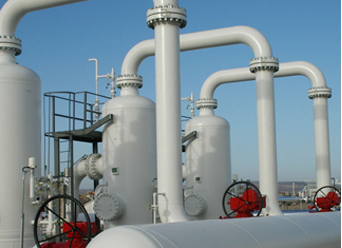Uzbek
- Afrikaans
- Albanian
- Amharic
- Arabic
- Armenian
- Azerbaijani
- Basque
- Belarusian
- Bengali
- Bosnian
- Bulgarian
- Catalan
- Cebuano
- Corsican
- Croatian
- Czech
- Danish
- Dutch
- English
- Esperanto
- Estonian
- Finnish
- French
- Frisian
- Galician
- Georgian
- German
- Greek
- Gujarati
- Haitian Creole
- hausa
- hawaiian
- Hebrew
- Hindi
- Miao
- Hungarian
- Icelandic
- igbo
- Indonesian
- irish
- Italian
- Japanese
- Javanese
- Kannada
- kazakh
- Khmer
- Rwandese
- Korean
- Kurdish
- Kyrgyz
- Lao
- Latin
- Latvian
- Lithuanian
- Luxembourgish
- Macedonian
- Malgashi
- Malay
- Malayalam
- Maltese
- Maori
- Marathi
- Mongolian
- Myanmar
- Nepali
- Norwegian
- Norwegian
- Occitan
- Pashto
- Persian
- Polish
- Portuguese
- Punjabi
- Romanian
- Russian
- Samoan
- Scottish Gaelic
- Serbian
- Sesotho
- Shona
- Sindhi
- Sinhala
- Slovak
- Slovenian
- Somali
- Spanish
- Sundanese
- Swahili
- Swedish
- Tagalog
- Tajik
- Tamil
- Tatar
- Telugu
- Thai
- Turkish
- Turkmen
- Ukrainian
- Urdu
- Uighur
- Uzbek
- Vietnamese
- Welsh
- Bantu
- Yiddish
- Yoruba
- Zulu
Telephone: +86 13120555503
Email: frank@cypump.com
Avg . 15, 2024 07:39 Back to list
Understanding the Role and Importance of Slurry Pump Liners in Industrial Applications
Understanding Slurry Pump Liners A Crucial Component in Pump Efficiency
Slurry pumps are essential in numerous industries, including mining, construction, and waste management. They are specifically designed to transport slurries—mixtures of solids and liquids—with high efficiency. A key component of slurry pumps that significantly influences their performance is the liner. Understanding the role and the material composition of slurry pump liners is crucial for maximizing operational efficiency and minimizing wear.
What are Slurry Pump Liners?
Slurry pump liners are protective components that line the casing of the pump. They act as a barrier between the aggressive slurry and the pump’s internal surfaces, thereby extending the life of the pump and ensuring that it operates at optimal efficiency. The liners absorb the impact of solid particles within the slurry, reducing the potential for erosion and physical damage to the pump’s core components.
Importance of Material Selection
The material from which slurry pump liners are made greatly affects their durability and performance. Common materials include rubber, high-chrome alloy, and polyurethane.
1. Rubber Liners Rubber-lined slurry pumps are favored for their ability to absorb impact and provide excellent resistance to corrosion and abrasion. They are particularly beneficial when handling slurries with fine particles. However, rubber liners can be less effective in high-temperature applications.
2. High-Chrome Alloy Liners These liners are known for their hardness and are often used in applications involving coarse or abrasive slurries. High-chrome alloy liners are less flexible than rubber, but they excel in environments where wear resistance is a priority.
slurry pump liner

3. Polyurethane Liners Polyurethane offers a compromise between rubber and metal materials, providing good toughness and flexibility. It is becoming increasingly popular due to its resistance to abrasion and the ability to withstand a broader range of temperatures.
Design Considerations
The design of the slurry pump liner is equally important as its material. Key design factors include the liner's thickness, the type of connection to the pump casing, and the shape which can affect flow dynamics. A well-designed liner system can significantly reduce turbulence within the pump, leading to better overall efficiency.
Maintenance and Replacement
Regular maintenance of slurry pump liners is crucial in ensuring long-term operational stability. Operators should routinely inspect liners for signs of wear, such as cracks or pitting, which can indicate potential failure points. The frequency of inspections often depends on the characteristics of the slurry being pumped and the operational environment. Timely replacement of worn-out liners can prevent more costly damages to the pump mechanism and reduce downtime.
Conclusion
Slurry pump liners play a critical role in the performance and longevity of slurry pumps. By selecting the appropriate material, ensuring optimal design, and conducting regular maintenance, operators can enhance the efficiency of their slurry pumping systems. Understanding the nuances of slurry pump liners is essential for industries that rely on the transport of slurries for their operations, ensuring not only smooth operational flows but also cost-effectiveness in the long run. As industries continue to evolve, so too will the technology and materials used in slurry pump liners, offering even greater efficiencies and performance improvements.
-
High-Performance Air Pumps for Sand & Gravel | Efficient Transport
NewsAug.03,2025
-
ISG Series Vertical Pipeline Pump - Chi Yuan Pumps Co., LTD.|Energy Efficiency, Corrosion Resistance
NewsAug.03,2025
-
ISG Series Pipeline Pump - Chi Yuan Pumps | Energy Efficiency&Compact Design
NewsAug.03,2025
-
ISG Series Vertical Pipeline Pump - Chi Yuan Pumps Co., LTD.|High Efficiency, Low Noise, Durable
NewsAug.02,2025
-
ISG Series Vertical Pipeline Pump - Chi Yuan Pumps | High Efficiency, Low Noise
NewsAug.02,2025
-
ISG Series Vertical Pipeline Pump- Chi Yuan Pumps Co., LTD.|High Efficiency&Compact Design
NewsAug.02,2025










